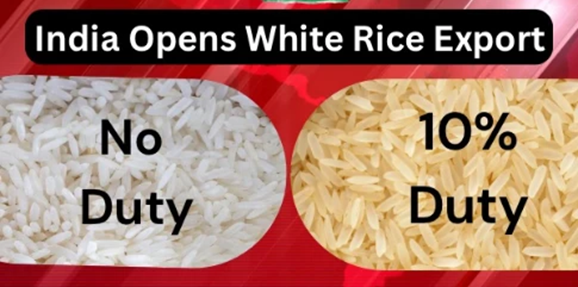India Lifts Non-Basmati Rice Export Ban Amid Rising Production
Why in the news?
The Indian government lifted its export ban on non-basmati white rice due to higher production, easing market restrictions, while concerns remain over possible domestic price increases.
Why was the export ban lifted?
- The export ban was imposed last year due to a slight dip in rice production and concerns about erratic monsoon patterns.
- This year, conditions improved with good monsoon rainfall, resulting in higher paddy sowing—2% more area under rice cultivation compared to last year.
- Rice production is estimated to increase by5% in 2023-24, with total output expected at 137.82 million tonnes.
- Declining wholesale rice prices and stable retail inflation also contributed to the decision.
Who will be impacted?
- The lifting of the ban will benefit traders and farmers, especially those growing premium non-basmati varieties like Sona Masoori.
- It will also allow state governments to buy rice for welfare schemes and distilleries for ethanol production.
- However, domestic retail rice prices could increase due to eased export restrictions.
India’s position in the global rice market:
- India is the world’s largest rice exporter, accounting for 33% of global exports in 2023.
- Non-basmati white rice makes up 25% of India’s total rice exports, with countries like Kenya, Mozambique, and Vietnam among key buyers.
- India faces competition from Thailand and Vietnam in the global rice market.
Key Facts About Rice:
- Rice is a staple food for most of India’s population.
- It is a kharif crop, requiring high temperatures (above 25°C) and annual rainfall above 100 cm.
- In areas with less rainfall, irrigation is used for rice cultivation.
- Southern states and West Bengal grow 2-3 rice crops annually due to favourable climate.
- In West Bengal, three rice crops are grown: ‘aus,’ ‘aman,’ and ‘boro.’
- About 25% of India’s cropped area is under rice cultivation.
- Leading producers: West Bengal, Uttar Pradesh, and Punjab.
- High-yielding states include Punjab, Tamil Nadu, Haryana, and Andhra Pradesh.
- India is the second-largest rice producer globally, after China.





